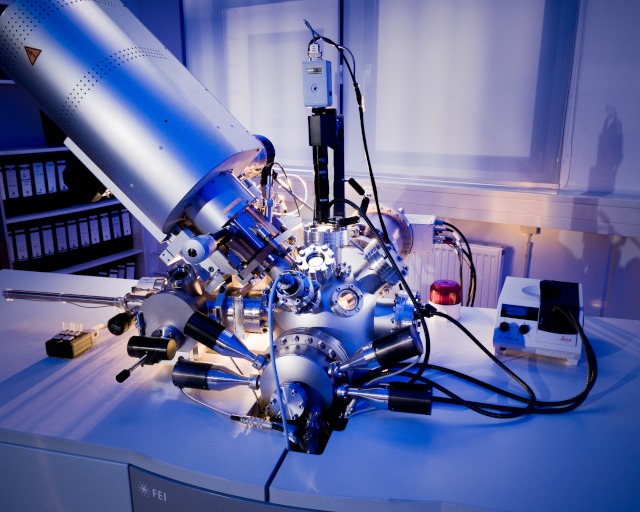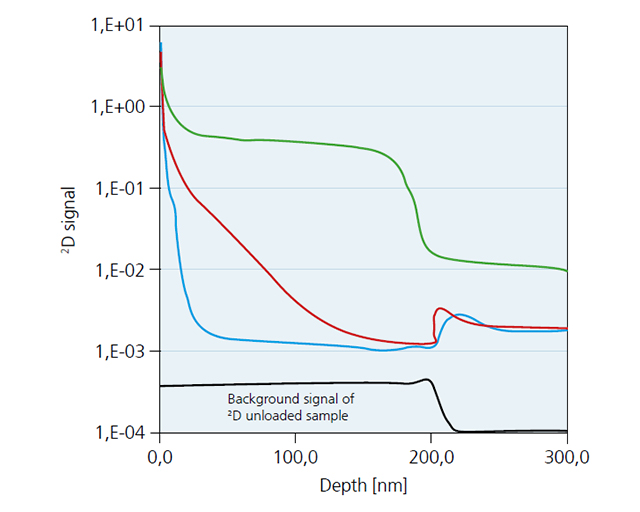
How deeply does hydrogen penetrate surfaces?

Hydrogen (H2) will increasingly be used as an energy source in the future. To enable this development, it must be manufactured, transported and stored. It is known that H2 penetrates into the materials of pipes and tanks, which can lead to hydrogen embrittlement and even fracture in steels, for example. Possible solutions include the coating of surfaces or the selection of special steel grades that reduce or prevent the diffusion of hydrogen into the material. To verify this, the Fraunhofer IST has developed a method which can measure the penetration depth and penetration intensity of the hydrogen.

SIMS depth profile analysis of the diffusion of hydrogen
Secondary ion mass spectroscopy (SIMS) is used to measure hydrogen in the surface of materials. The material is removed in a vacuum, layer by layer, with the aid of an ion beam and the number of escaping hydrogen ions is detected with high sensitivity by means of a mass spectrometer. In this way, a depth profile of the hydrogen distribution within the surface can be made. The problem here is that hydrogen is present on practically all surfaces, e.g. in the form of water or organic impurities.
Deuterium instead of hydrogen: sample loading in the high-pressure reactor
In order to charge surfaces with hydrogen in a controlled manner, a high-pressure reactor has now been set up at the Fraunhofer IST in which samples can be exposed to a hydrogen atmosphere at pressures of up to 200 bar and temperatures of up to 300°C. The high pressure simulates the conditions in tanks or pipes, while the high temperatures accelerate the diffusion processes, reducing testing times from weeks to hours. However, in order to distinguish this hydrogen from the water that is ubiquitous in the world, and similar substances, heavy hydrogen, i.e. deuterium gas, is used instead of normal hydrogen. This is chemically identical to regular hydrogen, but can be clearly detected in the mass spectrometer thanks to its higher mass.
Advantages of the method
In contrast to other methods in which the absorbed hydrogen is often only recorded as an integral value by means of expulsion, this method permits the measurement of depth distribution and thus the barrier effect of, for example, different surface treatments can be directly compared. The new reactor means that samples can be treated with hydrogen and analysis can be offered from a single source. Furthermore, the loaded samples can be used for microstructural analysis or mechanical testing in addition to examination by SIMS.
The new process will be utilized for projects within the Hydrogen Campus Salzgitter and will also be offered as a service to other companies or institutes.
This article is part of the Annual Report 2021.
This article is part of the Annual Report 2021.

